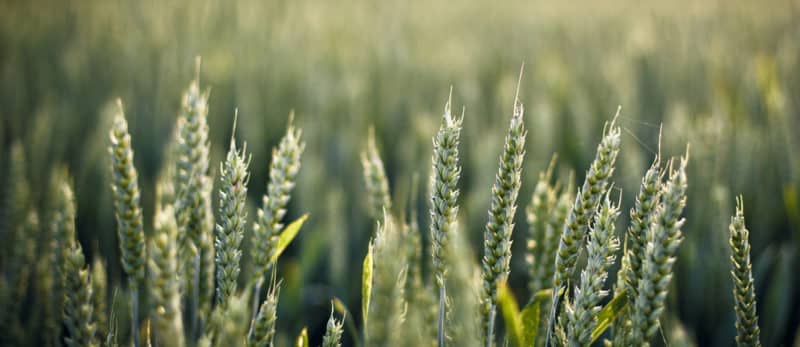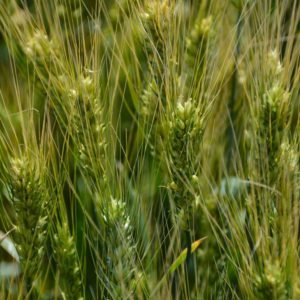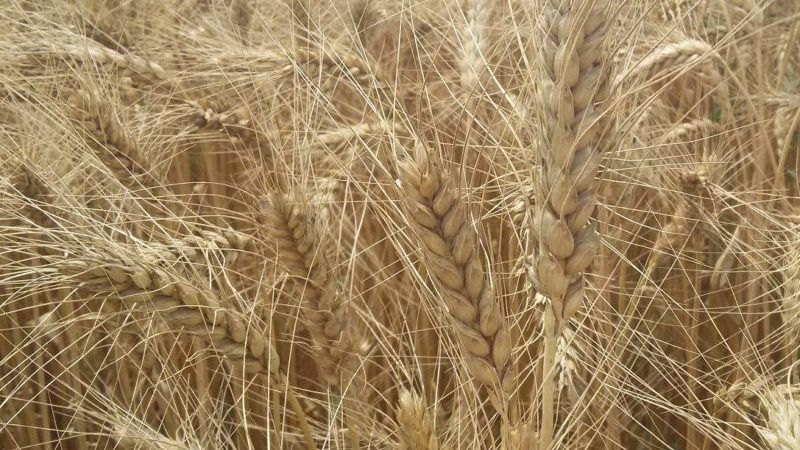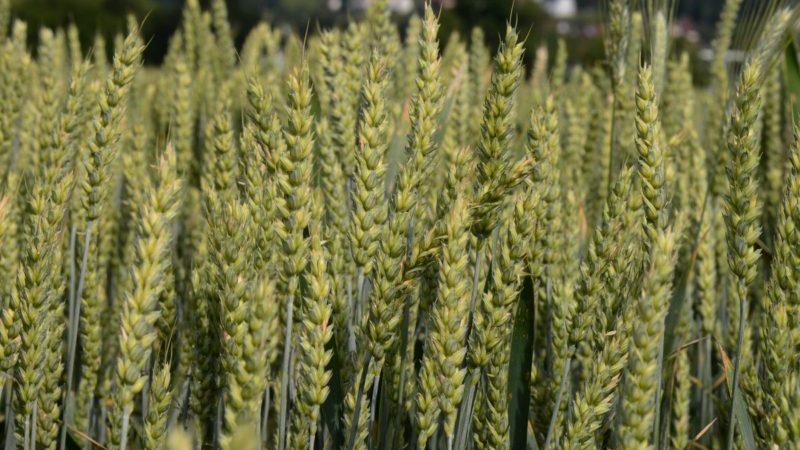Description of the variety and characteristics of winter wheat Ermak
When choosing a wheat variety for sowing, farmers pay attention to yield, crop resistance to disease and many other factors. The variety of varieties and hybrids makes the choice difficult. In the article we will talk about the main characteristics of Ermak winter wheat, the features of planting, care, harvesting and storage of this grain crop.
What kind of wheat is this?
Winter wheat variety Ermak was bred at the Rostov Institute of Grain Crops named after I.G. Kalinenko, entered into the state register of the Russian Federation in 2001, into the state register of Ukraine - in 2005, Moldova - in 2008.
Botanical description

Ermak is a highly productive variety medium soft winter wheat. This grain crop was bred by hybridizing the varieties Donskaya semi-intensive, Olympia, Donshchina.
The spike of the plant is spindle-shaped, white, spinous (the awns diverge slightly to the sides, short), the scales of the spike are ovoid, medium, the scale tooth is medium. The stem has an average length of 8-9 cm, plant height is from 75 to 85 cm.
The grain is oval-round, slightly pubescent, red, with a small shallow groove, medium coarseness. The nature of the grain is 799 g per liter, the weight of 1000 grains is 45 g. The protein and gluten content is 13.5% and 25%, respectively. The growing season of the plant averages from 230 to 290 days.
Characteristics and properties
Food wheat, belongs to group “A”, class 1-3, suitable for use in the baking industry.
The yield recorded in tests in 2001 is about 5.7 t/ha, the maximum yield is up to 10 t/ha. Wheat has high frost resistance - up to 90-98% of plants survive after winter.
Wheat is adapted to late sowing dates due to its high regenerative ability.
Recommended growing regions
Wheat has a limited region growing – allowed for use in the North Caucasus, Central Black Earth, Lower Volga regions, Ukraine, Moldova.
Features of cultivation

Sowing work is carried out using steam and non-fallow predecessors (peas, annual cereals and legumes, perennial plants). The seeding rate is 4.8-4.9 million seeds per 1 hectare. Does not require the use of pesticides. The variety is considered resource-saving.
Gsowing depth – 6-8 cm on dry and sandy soils, 4-6 cm on heavy soils.
Soil preparation for sowing is carried out by mechanized means - plowing, then harrowing is carried out to a depth of 19-20 cm using disc harrows. Then fertilizers are applied to the soil - manure or mineral fertilizer: per 1 ha 26-34 kg of nitrogen, 10-12 kg of phosphorus, 21-26 kg of potassium, 4-5 kg of calcium, application period - in the fall before plowing.
Sowing is carried out using continuous row or cross and narrow row methods using seeders. After completion of sowing, in order to avoid the appearance of a crust on the soil surface, which prevents normal germination, rolling and harrowing work is carried out.
Typical diseases and pests
Wheat is susceptible to many diseases and pests. Let's look at the most dangerous of them.
Septoria
Occurs during grain filling, at a temperature of +15…+20°C and a humidity of 90%.The disease affects ears and stems - brown and pink spots appear on them. Disease prevention is carried out using agrotechnical methods - crop rotation, plowing after harvesting.
Fire smut
A fungal disease that affects the ear. The ears become slightly flattened, green with a blue tint, and the scales move apart. Treatment and prevention: thermal disinfection of seeds, application of fertilizers (superphosphate, manure), optimal sowing dates, seed treatment with fungicides, for example, Triazol.
Brown rust
Subepidermal brown pustules appear on leaves and leaf sheaths, which over time become black with a glossy tint.
Means of combating the disease: agrotechnical - crop rotation, harrowing of crops, fertilizing with potassium-phosphorus fertilizers, weed control, and chemical methods - fungicides such as triazoles, strobilurins, biological fungicides.
Pests
Pests that attack wheat:
- Bread ground beetle affects the plant parenchyma, often leading to its death. Control means: correct crop rotation (do not re-sow grains), seed treatment with insecticides “Gaucho”, “Nuprid”, “Max”.
- Cereal flies (Hessian, black wheat, Swedish) damage the plant stem. Control measures - quick threshing of grain, peeling stubble together with harvesting, the use of insecticides “Karate Zeon”, “Enzhio”.
- Wireworms (black, striped) affect the root system. Control methods are stubble peeling, cultivation, disking, deep autumn plowing.
- Mice (vole, forest vole) eat seeds and seedlings. Control means: timely and loss-free harvesting of grain, pesticides – “Bactrodencid”, ammonia water.
Productivity

The yield of the crop depends on the region: in the North Caucasus it is 41-42 c/ha, in the Lower Volga - 19-20 c/ha, in the Rostov region it reaches 95 c/ha.
Harvesting begins in the waxy ripeness phase with seed moisture content not exceeding 29%. Harvested by direct or separate harvesting. The first method is economically feasible, as it combines the processes of downloading and threshing.
The harvest is harvested until the ears dry completely and begin to crack and fall off.
After threshing work is completed, the grain is delivered to the elevator for post-harvest processing: cleaning from weeds, debris, insects, drying, cooling.
Storage
Store grain in dry, ventilated rooms at a temperature of +6...+9°C and a humidity of 70%.
During storage, the grain is periodically stirred to avoid heating, rotting and combustion.
Advantages and disadvantages of the variety

Advantages of the variety:
- resistant to diseases - white and yellow rust, powdery mildew, loose smut;
- does not require the use of pesticides;
- late sowing dates;
- resistance to lodging;
- drought resistance;
- frost resistance.
Disadvantages of the variety:
- susceptibility to a number of diseases - leaf rust, septoria, smut;
- It is affected by pests - wireworms, bread flies, ground beetles and rodents.
Price
The market price of seed material for this crop ranges from 15 to 20 rubles. per kg of seeds.
Wholesale prices for the flour milling industry – 13,000-17,000 rubles. for t.
Conclusion
Winter wheat of the Ermak variety is adapted for sowing in the southern republics and regions of the Russian Federation, throughout Ukraine and Moldova. This wheat is frost-resistant and resistant to many diseases and pests.
The culture does not require special measures for soil preparation, care, cleaning and storage. However, yields largely depend on the planting region.